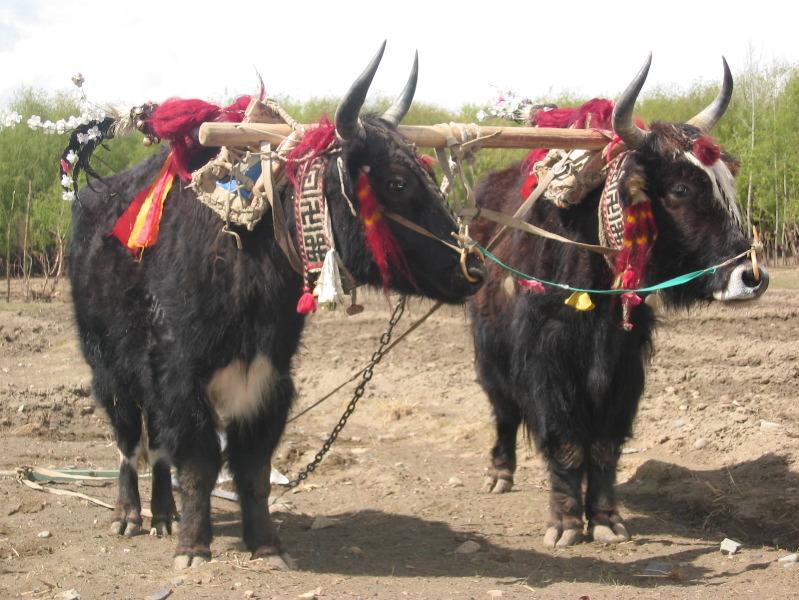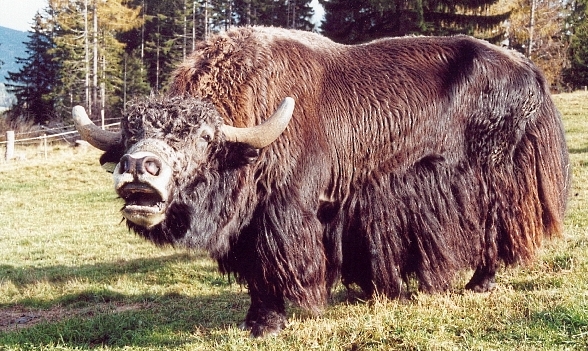Interactions
 As an animal whose habitat is the isolated Himalayas, the
domesticated does not come in contact with too many other
organisms, but there are definitely some worth mentioning.
As an animal whose habitat is the isolated Himalayas, the
domesticated does not come in contact with too many other
organisms, but there are definitely some worth mentioning.
There are of course, the organisms that the yak feeds on that
you read about on the Nutrition
page. This includes wild flowers, mosses, lichens, and grasses.
There are also a few animals that the wil yak gets along with,
the Tibetan gazelle, Tibetan argali, blue sheep, and the Tibetan
antelope.
While the yak may be the predator to the organisms above, the
yak is sometimes the prey. The Tibetan Wolf and the Snow Leopard
(Uncia
uncia) have been known to prey upon yaks in the wild.
The yak has horns to defend itself with, but both the wolf and
leopard are very skilled carnivores and are equip with both
claws and sharp teeth. The domesticated yak may also have some
interactions with the wild yak,
Bos mutus that you can read about on that page. Just
like us in the summer months, yaks themselves can be annoyed by
the
mosquito, even in the high mountain regions.
One other interesting organism that the yak interacts with
actually lives inside of it. As you read on the
Adaptation page, yaks have a rumen
that helps the yak successfully absorb all the nutrients in the
food it eats. This stomach, just like ours contains bacteria to
help with the digestion process. One of these kinds of bacteria
found in animals with a rumen is
Lactobacillus bulgaricus, a bacteria that is actually
used in the making and found in yogurt. It is found in the
stomach to help break down lactose.

Yaks have also had a very long history with humans. People living on the
Tibetan Plateau have been raising yaks for 4,000 years and hunting them for
even more. Wild yaks are slightly more aggressive than domesticated yaks,
and have been known to attack villages. Domesticated yaks, however, provide many resources to the people who have chosen to live
in such seclusion. Yaks can provide milk, butter, cheese, fur, hides, and
dung for fuel. Sometimes yaks help with plowing fields for farmers who do
try to grow crops in this environment. Yaks can also be used as pack and transportion animals. Yaks adapted to live
in a mountainous environment and so they are very sure footed. This makes
them great to travel through the terrain with and they can bear very heavy
loads as well. They have become a
significant part of the culture there.
Find out how people use the yak for Food, or see how
the yak Reproduces.
